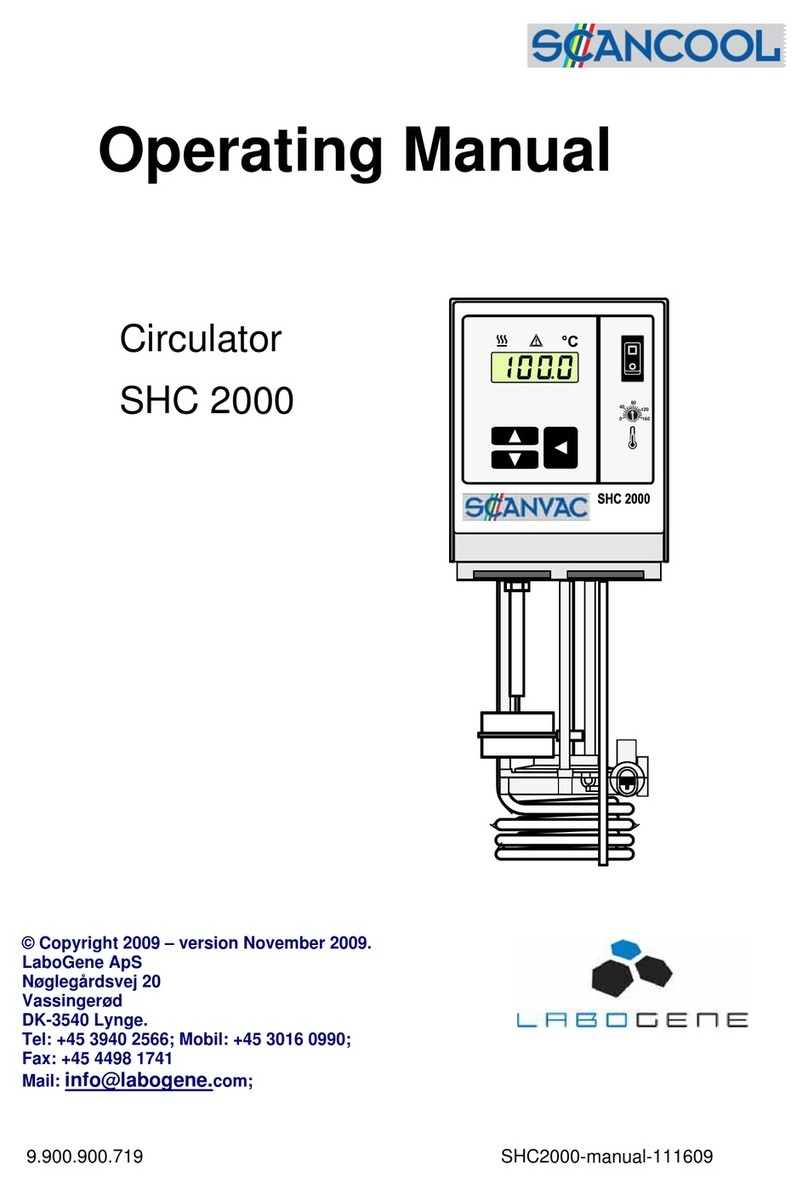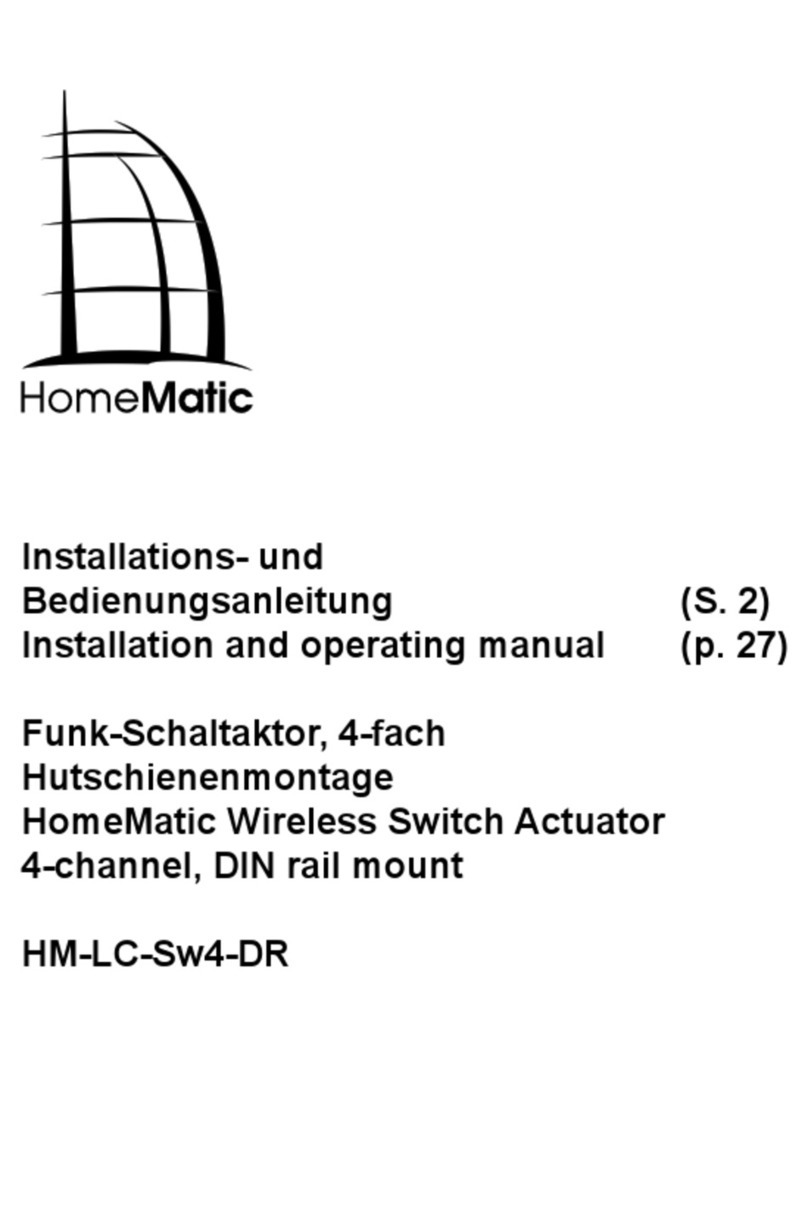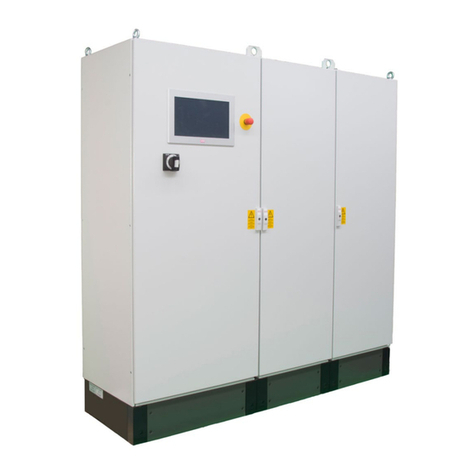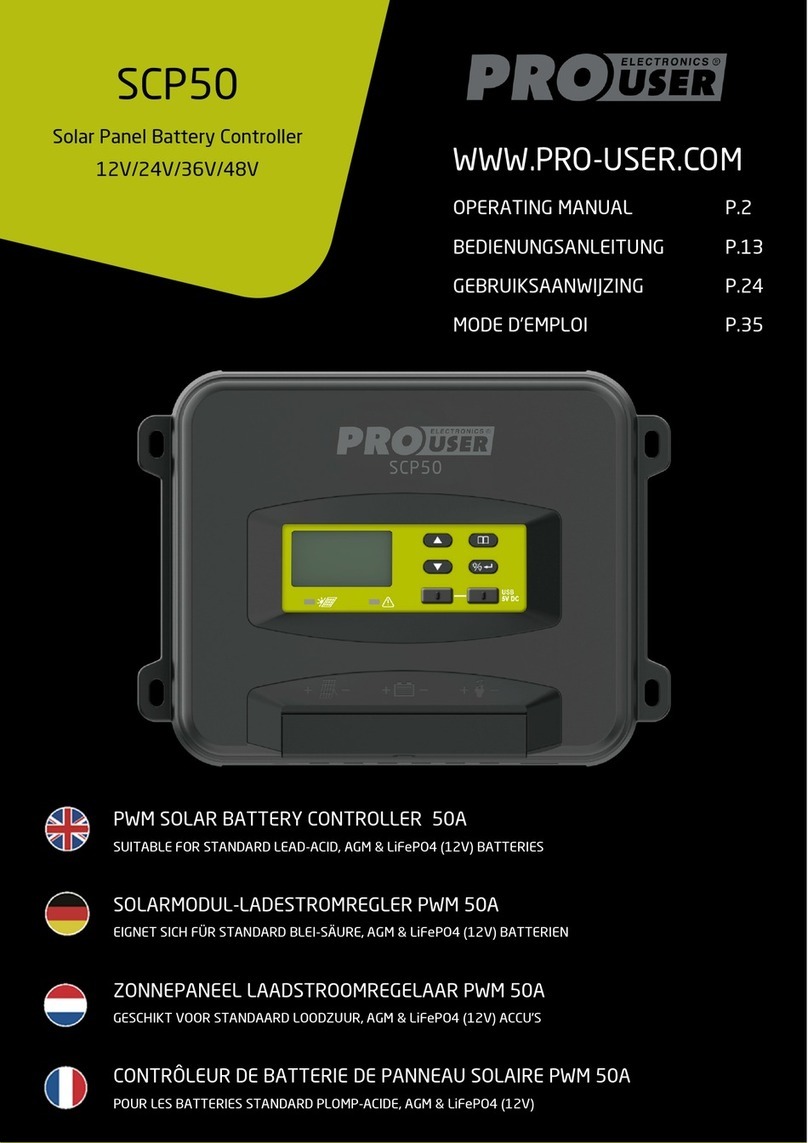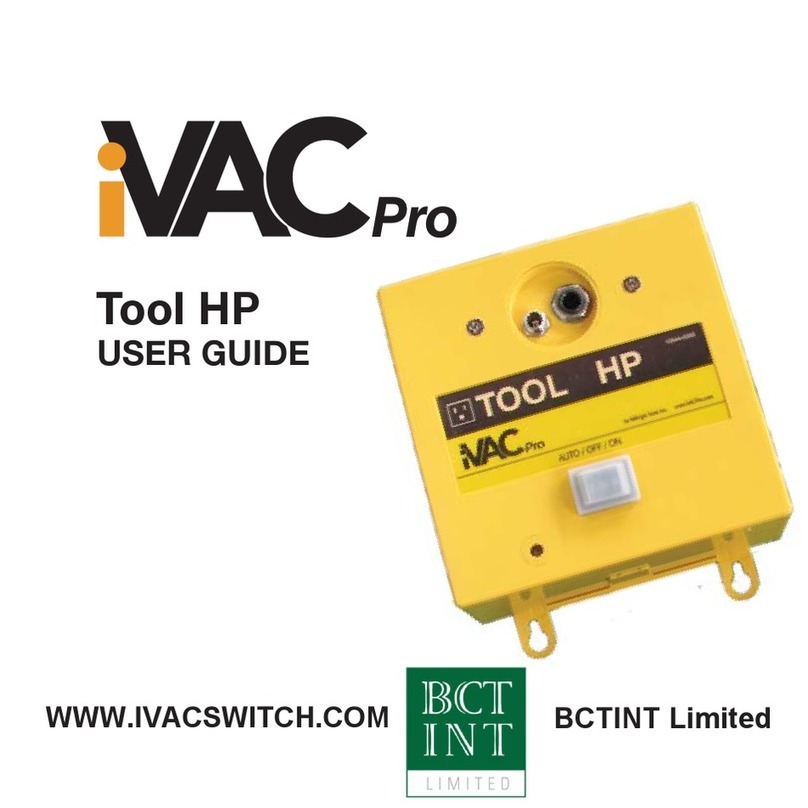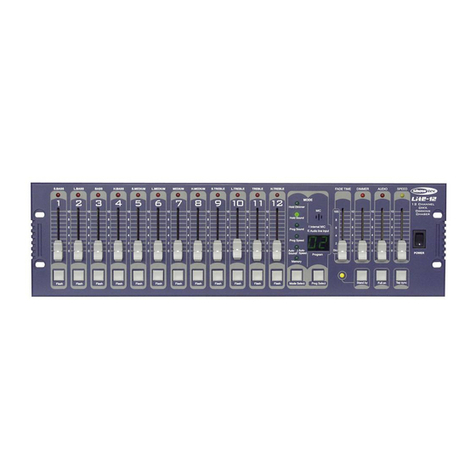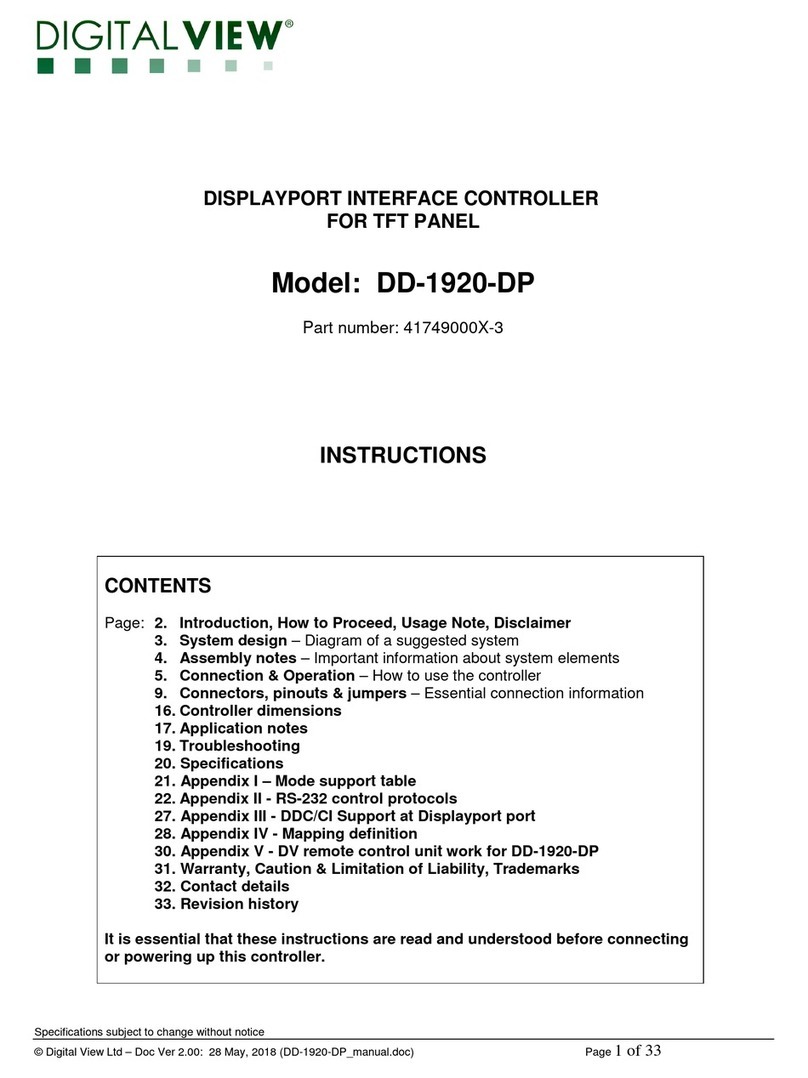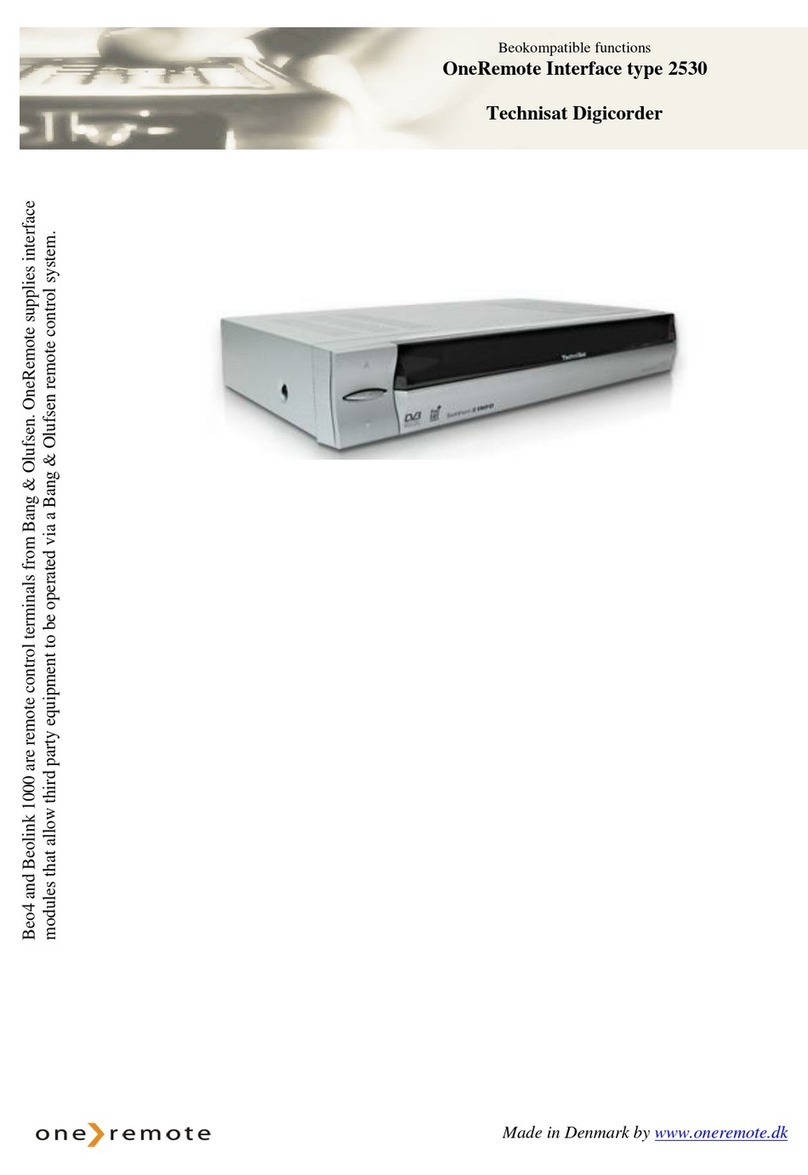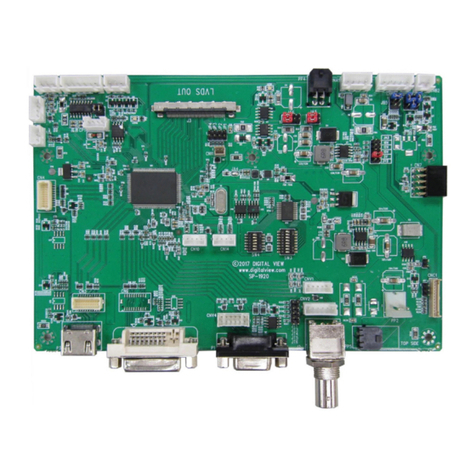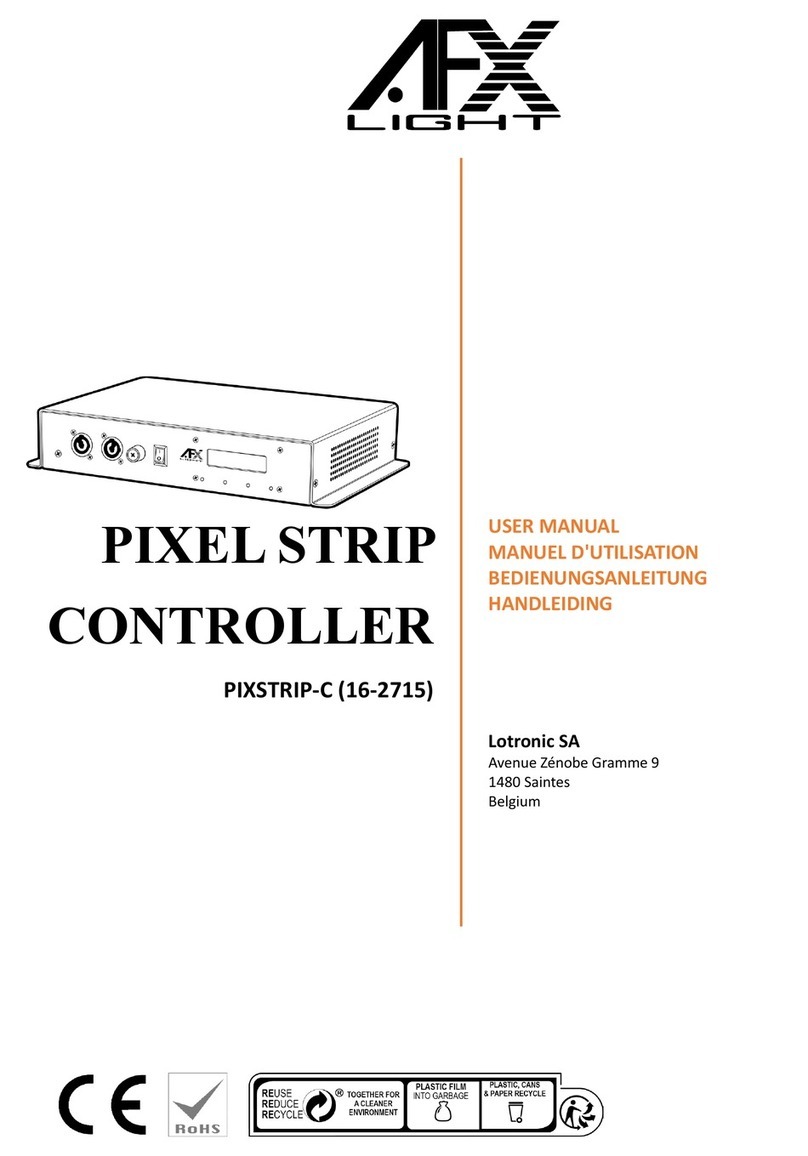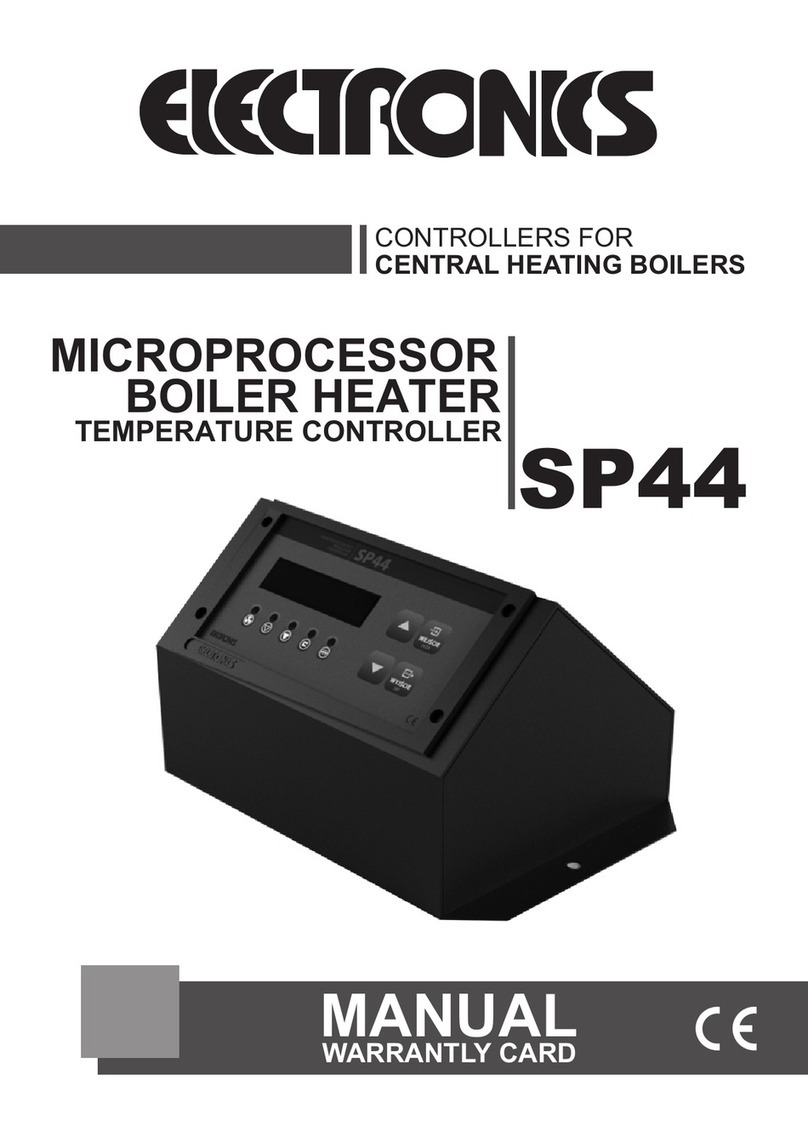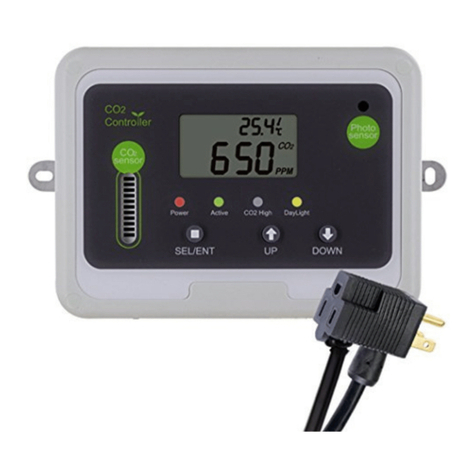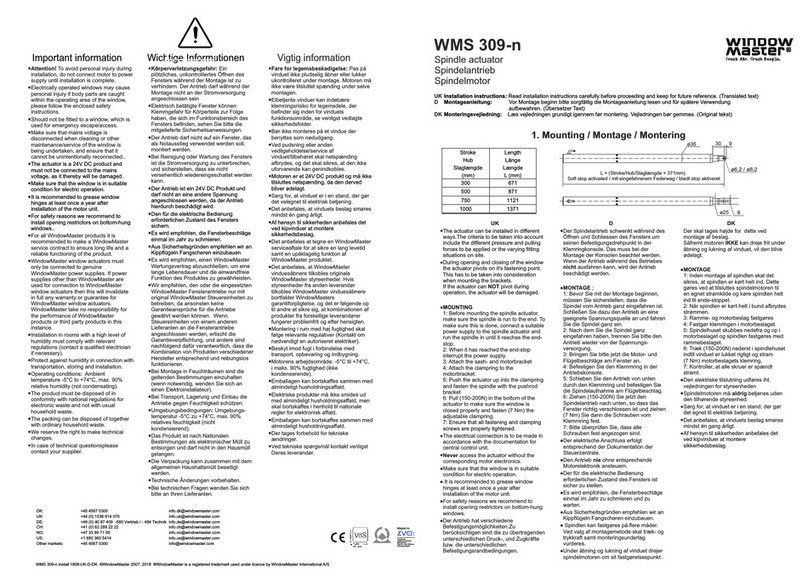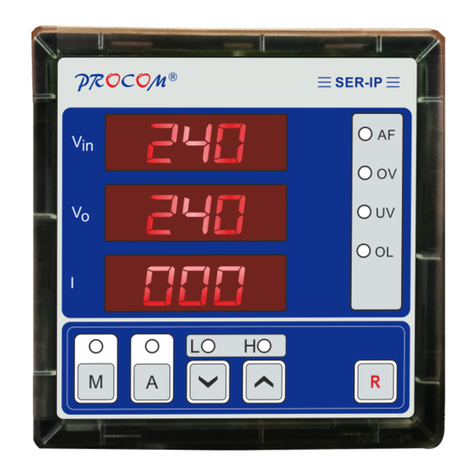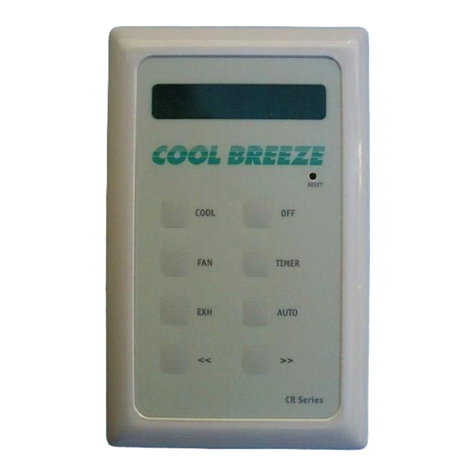Intelligent XSEL-R User manual

Operation Manual
Forth Edition
XSEL Controller
R/S/RX/SX/
RXD/SXD Type


Please Read Before Use
Thank you for purchasing our product.
This Operation Manual describes all necessary information items to operate this product safely
such as the operation procedure, structure and maintenance procedure.
Before the operation, read this manual carefully and fully understand it to operate this product
safely.
The enclosed DVD in this product package includes the Operation Manual for this product.
For the operation of this product, print out the necessary sections in the Operation Manual or
display them using the personal computer.
After reading through this manual, keep this Operation Manual at hand so that the operator of this
product can read it whenever necessary.
[Important]
� This Operation Manual is original.
� The product cannot be operated in any way unless expressly specified in this Operation
Manual. IAI shall assume no responsibility for the outcome of any operation not specified
herein.
� Information contained in this Operation Manual is subject to change without notice for the
purpose of product improvement.
� If you have any question or comment regarding the content of this manual, please contact
the IAI sales office near you.
� Using or copying all or part of this Operation Manual without permission is prohibited.
� The company names, names of products and trademarks of each company shown in the
sentences are registered trademarks.


Table of Contents
Safety Guide ·····················································································································1
Controller’s model and corresponding actuator································································8
Caution in Handling ··········································································································9
International Standards Compliances ············································································· 11
Name for Each Parts and Their Functions······································································12
Actuator Axes··················································································································23
Starting Procedures ········································································································29
Chapter 1 Specifications Check······················································································31
1.1 Product Check ············································································································ 31
1.1.1 Components (Excluding Options) ········································································ 31
1.1.2 Teaching Tool (Optional) ······················································································ 31
1.1.3 Operation manuals related to this product, which are contained in
the operation manual (DVD). ··············································································· 32
1.1.4 How to read the model plate ················································································ 32
1.1.5 How to read the model························································································· 33
1.2 Basic Specifications ···································································································· 36
1.2.1 XSEL-R/S Controller Type ··················································································· 36
1.2.2 XSEL-RX/SX Controller Type ·············································································· 41
1.2.3 XSEL-RXD/SXD Controller Type ········································································· 48
1.2.4 Selection of the Circuit Breaker ··········································································· 53
1.2.5 Selection of the Leakage Breaker········································································ 53
1.3 External Dimensions··································································································· 54
1.3.1 Absolute Battery Unit Non-Equipped Type ·························································· 54
1.3.2 Absolute Battery Unit Equipped Type ·································································· 55
1.4 Option·························································································································· 56
1.4.1 PIO Board ············································································································ 56
1.4.2 Field Network Board ···························································································· 58
1.4.3 Extension I/O Unit ································································································ 59
1.4.4 Panel Unit: PU-1 ·································································································· 60
1.4.5 Brake Box: RCB-110-RA13-0 ·············································································· 61
1.4.6 Regenerative Unit: REU-1 ··················································································· 62
1.5 Installation and Storage Environment········································································· 64
1.6 Noise Prevention and the Installation ········································································· 65
Chapter 2 Wiring·············································································································69
2.1 Wiring (Connection of devices) Diagram ···································································· 69
2.1.1 XSEL-R ················································································································69
2.1.2 XSEL-S ················································································································ 70
2.1.3 XSEL-RX·············································································································· 71
2.1.4 XSEL-SX·············································································································· 72
2.1.5 XSEL-RXD ··········································································································· 73
2.1.6 XSEL-SXD ··········································································································· 74
2.2 Circuit Diagram (Example)·························································································· 75
2.2.1 3-phase type power supply circuit········································································ 75
2.2.2 Single-phase type power supply circuit ······························································· 76
2.2.3 Brake Release Power Supply ·············································································· 77
2.2.4 Emergency Stop Circuit (For R/RX/RXD Type) ··················································· 78
2.2.5 Emergency Stop Circuit (For S/SX/SXD Type) ···················································· 79
2.2.6 Motor Encoder Circuit ·························································································· 80
2.2.7 PIO Circuit············································································································ 87
2.2.8 Connection of Regenerative Unit (Option)··························································· 99

2.2.9 Brake release switch Connector
Layout is to be established for single axis actuator equipped with a brake)······ 100
2.2.10 Extension I/O unit (Option)················································································· 101
2.2.11 Brake Box (RCB-110-RA13-0) (Option)····························································· 114
2.2.12 General-purpose RS232C Port Connectors ······················································ 115
2.2.13 Teaching Tool ····································································································· 115
2.3 Wiring Method··········································································································· 116
2.3.1 Wiring for Power Supply Circuit ········································································· 116
2.3.2 Wiring the Emergency Stop Circuit (System I/O )·············································· 120
2.3.3 Wiring for Actuator······························································································ 125
2.3.4 Wiring for PIO····································································································· 127
2.3.5 Wiring for extension I/O units············································································· 129
2.3.6 Wiring for Panel Unit ·························································································· 133
2.3.7 Wiring for Regeneration Unit (REU-1) (Option) ················································· 134
2.3.8 Wiring for Brake Box (RCB-110-RA13-0)··························································· 135
2.3.9 Wiring for the Teaching ······················································································ 137
2.3.10 Wiring the Brake Forced Release Switch ·························································· 139
2.3.11 Wiring for General-purpose RS232C Port ························································· 140
Chapter 3 Operation ·····································································································141
3.1 Types of Operations·································································································· 141
3.2 I/O Ports ···················································································································· 142
3.3 Starting the Controller ······························································································· 144
3.3.1 Turning on the Power························································································· 144
3.3.2 Panel Window Display ······················································································· 145
3.3.3 Position Table and Program Creation and Writing············································· 148
3.4 Program Operation ··································································································· 149
3.4.1 Auto Start upon Power On ················································································· 149
3.4.2 Starting a Program by Specifying its Program Number ····································· 151
Chapter 4 Absolute Reset and Absolute Battery···························································153
4.1 Absolute Reset············································································································· 153
4.1.1 For PC Software·································································································· 153
4.1.2 For Teaching Pendant ························································································· 225
4.2 Absolute Battery···········································································································255
4.2.1 Absolute Encoder Backup Type ·········································································· 255
4.2.2 Replace Absolute Battery···················································································· 256
Chapter 5 Special Functions·························································································261
5.1 RC Gateway Function······························································································· 261
5.2 Vision system I/F Function························································································ 262
5.3 Synchro Function ······································································································263
5.3.1 Overview ············································································································ 263
5.3.2 How to Absolute Reset on Synchronizing Type ················································· 265
5.4 Multiple-Slider Near-Miss Detection (Collision Prevention) Function ······················· 275

Chapter 6 Parameter ····································································································277
6.1 I/O Parameter (All types) ·························································································· 279
6.2 Parameters Common to All Axes ·············································································· 326
6.2.1 For XSEL-R/S ···································································································· 326
6.2.2 For XSEL-RX/SX, RXD/SXD ············································································· 335
6.3 Axis-Specific Parameters·························································································· 346
6.3.1 For XSEL-R/S ··········································································································· 346
6.3.2 For XSEL-RX/SX, RXD/SXD ············································································· 356
6.4 Driver Parameters (All types)···················································································· 370
6.5 Encoder Parameters (All types)················································································ 374
6.6 I/O Devices Parameters (All types)··········································································· 376
6.7 Other Parameters (All types) ···················································································· 379
6.8 Parameters for Linear / Rotation Controls ································································ 387
6.9 Manual Operation Types··························································································· 388
6.10 Parameter Setting (Applied)······················································································ 389
6.10.1 Want to Operate the System Tentatively Without Using I/Os··························· 390
6.10.2 Want to Output an Auto Operation Determination Signal
from the XSEL Controller ················································································· 390
6.10.3 Want to Retain Current Output Statuses Even during Emergency Stop ·········· 390
6.10.4 Want to Start an Emergency Program ····························································· 390
6.10.5 Want to Enable Auto Recovery (Restart)
upon Cancellation of Emergency Stop····························································· 391
6.10.6 Want to Enable Auto Recovery (Error Reset)
upon Cancellation of Emergency Stop····························································· 391
6.10.7 Want to Return to the Condition Immediately before Emergency Stop ··········· 391
6.10.8 Want to Restart the XSEL Controller Externally··············································· 391
6.10.9 Want to Turn on the Servo Externally ······························································ 392
6.10.10 Want to make a home-return on all the single axis actuators externally ········· 392
6.10.11 Want to Execute the XSEL Controller Program Externally ······························ 392
6.10.12 Want to execute a program externally
by making an indication of a program number in binary ·································· 392
6.10.13 Want to Pause the XSEL Controller Externally ················································ 392
6.10.14 Want to Reset Errors Externally······································································· 393
6.10.15 Want to Release the Actuator Brake Externally ··············································· 393
6.10.16 Want to Switch between AUTO and MANU Modes Externally ························ 393
6.10.17 Want to Change Input Port Assignments ························································· 394
6.10.18 Want to output that all the single axis actuators are at the home position······· 394
6.10.19 Want to output that home-return operation is complete
on all the single axis actuators········································································· 394
6.10.20 Want to output that a single axis actuator got into the area (zone)
which has been set ·························································································· 395
Maximum and minimum values can be set in 0.001mm unit. ······································ 396
6.10.21 Want to Output the Error Level ········································································ 396
6.10.22 Want to Output the Emergency Stop Status····················································· 396
6.10.23 Want to Know the Current Operation Mode····················································· 397
6.10.24 Want to Output an Absolute-encoder Backup Battery Voltage Low Alarm ······ 397
6.10.25 Want to Change Output Port Assignments ······················································ 397
6.10.26 Want to Use a General-purpose RS232C Port Connector ······························ 397
6.10.27 Want to Know the Current Value of Electric Current
without Connecting a Teaching Tool································································· 399
6.10.28 Want to Monitor Variables without Connecting a Teaching Tool ······················ 400
6.11 Servo Adjustment······································································································401
Chapter 7 Troubleshooting ···························································································403
7.1 Action to Be Taken upon Occurrence of Problem····················································· 403
7.2 Error Level Control···································································································· 408
7.3 Error List (MAIN application)····················································································· 410

Chapter 8 Appendix ······································································································473
8.1 Example of Safety Circuit for S/SX/SXD type
(Conforming to Safety Category) ·············································································· 473
8.1.1 Safety Circuit Operation Timings ······································································· 474
8.2 Stopping method and Recovery················································································ 480
8.2.1 Stopping method ································································································ 480
8.2.2 Recovery ············································································································ 481
8.3 Specifications List for Connectable Single Axis Actuator·········································· 483
Chapter 9 Warranty·······································································································531
9.1 Warranty Period ········································································································ 531
9.2 Scope of the Warranty ······························································································ 531
9.3 Honoring the Warranty······························································································ 531
9.4 Limited Liability ········································································································· 531
9.5 Conditions of Conformance with Applicable
Standards/Regulations, Etc., and Applications ························································· 532
9.6 Other Items Excluded from Warranty········································································ 532
Trouble Report Sheet ···································································································533
Change History·············································································································534

1
Safety Guide
“Safety Guide” has been written to use the machine safely and so prevent personal injury or
property damage beforehand. Make sure to read it before the operation of this product.
Safety Precautions for Our Products
The common safety precautions for the use of any of our robots in each operation.
No. Operation
Description Description
1 Model
Selection
� This product has not been planned and designed for the application
where high level of safety is required, so the guarantee of the protection
of human life is impossible. Accordingly, do not use it in any of the
following applications.
1) Medical equipment used to maintain, control or otherwise affect
human life or physical health.
2) Mechanisms and machinery designed for the purpose of moving or
transporting people (For vehicle, railway facility or air navigation
facility)
3) Important safety parts of machinery (Safety device, etc.)
� Do not use the product outside the specifications. Failure to do so may
considerably shorten the life of the product.
� Do not use it in any of the following environments.
1) Location where there is any inflammable gas, inflammable object or
explosive
2) Place with potential exposure to radiation
3) Location with the ambient temperature or relative humidity exceeding
the specification range
4) Location where radiant heat is added from direct sunlight or other
large heat source
5) Location where condensation occurs due to abrupt temperature
changes
6) Location where there is any corrosive gas (sulfuric acid or
hydrochloric acid)
7) Location exposed to significant amount of dust, salt or iron powder
8) Location subject to direct vibration or impact
� For an actuator used in vertical orientation, select a model which is
equipped with a brake. If selecting a model with no brake, the moving
part may drop when the power is turned OFF and may cause an
accident such as an injury or damage on the work piece.

2
No. Operation
Description Description
2 Transportation � When carrying a heavy object, do the work with two or more persons or
utilize equipment such as crane.
� When the work is carried out with 2 or more persons, make it clear who
is to be the leader and who to be the follower(s) and communicate well
with each other to ensure the safety of the workers.
� When in transportation, consider well about the positions to hold,
weight and weight balance and pay special attention to the carried
object so it would not get hit or dropped.
� Transport it using an appropriate transportation measure.
The actuators available for transportation with a crane have eyebolts
attached or there are tapped holes to attach bolts. Follow the
instructions in the operation manual for each model.
� Do not step or sit on the package.
� Do not put any heavy thing that can deform the package, on it.
� When using a crane capable of 1t or more of weight, have an operator
who has qualifications for crane operation and sling work.
� When using a crane or equivalent equipments, make sure not to hang a
load that weighs more than the equipment’s capability limit.
� Use a hook that is suitable for the load. Consider the safety factor of the
hook in such factors as shear strength.
� Do not get on the load that is hung on a crane.
� Do not leave a load hung up with a crane.
� Do not stand under the load that is hung up with a crane.
3 Storage and
Preservation
� The storage and preservation environment conforms to the installation
environment. However, especially give consideration to the prevention
of condensation.
� Store the products with a consideration not to fall them over or drop due
to an act of God such as earthquake.
4 Installation
and Start
(1) Installation of Robot Main Body and Controller, etc.
� Make sure to securely hold and fix the product (including the work part).
A fall, drop or abnormal motion of the product may cause a damage or
injury.
Also, be equipped for a fall-over or drop due to an act of God such as
earthquake.
� Do not get on or put anything on the product. Failure to do so may
cause an accidental fall, injury or damage to the product due to a drop
of anything, malfunction of the product, performance degradation, or
shortening of its life.
� When using the product in any of the places specified below, provide a
sufficient shield.
1) Location where electric noise is generated
2) Location where high electrical or magnetic field is present
3) Location with the mains or power lines passing nearby
4) Location where the product may come in contact with water, oil or
chemical droplets

3
No. Operation
Description Description
(2) Cable Wiring
� Use our company’s genuine cables for connecting between the actuator
and controller, and for the teaching tool.
� Do not scratch on the cable. Do not bend it forcibly. Do not pull it. Do
not coil it around. Do not insert it. Do not put any heavy thing on it.
Failure to do so may cause a fire, electric shock or malfunction due to
leakage or continuity error.
� Perform the wiring for the product, after turning OFF the power to the
unit, so that there is no wiring error.
� When the direct current power (+24V) is connected, take the great care
of the directions of positive and negative poles. If the connection
direction is not correct, it might cause a fire, product breakdown or
malfunction.
� Connect the cable connector securely so that there is no disconnection
or looseness. Failure to do so may cause a fire, electric shock or
malfunction of the product.
� Never cut and/or reconnect the cables supplied with the product for the
purpose of extending or shortening the cable length. Failure to do so
may cause the product to malfunction or cause fire.
4 Installation
and Start
(3) Grounding
� The grounding operation should be performed to prevent an electric
shock or electrostatic charge, enhance the noise-resistance ability and
control the unnecessary electromagnetic radiation.
� For the ground terminal on the AC power cable of the controller and the
grounding plate in the control panel, make sure to use a twisted pair
cable with wire thickness 0.5mm2 (AWG20 or equivalent) or more for
grounding work. For security grounding, it is necessary to select an
appropriate wire thickness suitable for the load. Perform wiring that
satisfies the specifications (electrical equipment technical standards).
� Perform Class D Grounding (former Class 3 Grounding with ground
resistance 100� or below).

4
No. Operation
Description Description
4 Installation
and Start
(4) Safety Measures
� When the work is carried out with 2 or more persons, make it clear who
is to be the leader and who to be the follower(s) and communicate well
with each other to ensure the safety of the workers.
� When the product is under operation or in the ready mode, take the
safety measures (such as the installation of safety and protection
fence) so that nobody can enter the area within the robot’s movable
range. When the robot under operation is touched, it may result in
death or serious injury.
� Make sure to install the emergency stop circuit so that the unit can be
stopped immediately in an emergency during the unit operation.
� Take the safety measure not to start up the unit only with the power
turning ON. Failure to do so may start up the machine suddenly and
cause an injury or damage to the product.
� Take the safety measure not to start up the machine only with the
emergency stop cancellation or recovery after the power failure. Failure
to do so may result in an electric shock or injury due to unexpected
power input.
� When the installation or adjustment operation is to be performed, give
clear warnings such as “Under Operation; Do not turn ON the power!”
etc. Sudden power input may cause an electric shock or injury.
� Take the measure so that the work part is not dropped in power failure
or emergency stop.
� Wear protection gloves, goggle or safety shoes, as necessary, to
secure safety.
� Do not insert a finger or object in the openings in the product. Failure to
do so may cause an injury, electric shock, damage to the product or
fire.
� When releasing the brake on a vertically oriented actuator, exercise
precaution not to pinch your hand or damage the work parts with the
actuator dropped by gravity.
5 Teaching � When the work is carried out with 2 or more persons, make it clear who
is to be the leader and who to be the follower(s) and communicate well
with each other to ensure the safety of the workers.
� Perform the teaching operation from outside the safety protection
fence, if possible. In the case that the operation is to be performed
unavoidably inside the safety protection fence, prepare the “Stipulations
for the Operation” and make sure that all the workers acknowledge and
understand them well.
� When the operation is to be performed inside the safety protection
fence, the worker should have an emergency stop switch at hand with
him so that the unit can be stopped any time in an emergency.
� When the operation is to be performed inside the safety protection
fence, in addition to the workers, arrange a watchman so that the
machine can be stopped any time in an emergency. Also, keep watch
on the operation so that any third person can not operate the switches
carelessly.
� Place a sign “Under Operation” at the position easy to see.
� When releasing the brake on a vertically oriented actuator, exercise
precaution not to pinch your hand or damage the work parts with the
actuator dropped by gravity.
* Safety protection Fence : In the case that there is no safety protection
fence, the movable range should be indicated.

5
No. Operation
Description Description
6 Trial
Operation
� When the work is carried out with 2 or more persons, make it clear who
is to be the leader and who to be the follower(s) and communicate well
with each other to ensure the safety of the workers.
� After the teaching or programming operation, perform the check
operation one step by one step and then shift to the automatic
operation.
� When the check operation is to be performed inside the safety
protection fence, perform the check operation using the previously
specified work procedure like the teaching operation.
� Make sure to perform the programmed operation check at the safety
speed. Failure to do so may result in an accident due to unexpected
motion caused by a program error, etc.
� Do not touch the terminal block or any of the various setting switches in
the power ON mode. Failure to do so may result in an electric shock or
malfunction.
7 Automatic
Operation
� Check before starting the automatic operation or rebooting after
operation stop that there is nobody in the safety protection fence.
� Before starting automatic operation, make sure that all peripheral
equipment is in an automatic-operation-ready state and there is no
alarm indication.
� Make sure to operate automatic operation start from outside of the
safety protection fence.
� In the case that there is any abnormal heating, smoke, offensive smell,
or abnormal noise in the product, immediately stop the machine and
turn OFF the power switch. Failure to do so may result in a fire or
damage to the product.
� When a power failure occurs, turn OFF the power switch. Failure to do
so may cause an injury or damage to the product, due to a sudden
motion of the product in the recovery operation from the power failure.

6
No. Operation
Description Description
8 Maintenance
and
Inspection
� When the work is carried out with 2 or more persons, make it clear who
is to be the leader and who to be the follower(s) and communicate well
with each other to ensure the safety of the workers.
� Perform the work out of the safety protection fence, if possible. In the
case that the operation is to be performed unavoidably inside the safety
protection fence, prepare the “Stipulations for the Operation” and make
sure that all the workers acknowledge and understand them well.
� When the work is to be performed inside the safety protection fence,
basically turn OFF the power switch.
� When the operation is to be performed inside the safety protection
fence, the worker should have an emergency stop switch at hand with
him so that the unit can be stopped any time in an emergency.
� When the operation is to be performed inside the safety protection
fence, in addition to the workers, arrange a watchman so that the
machine can be stopped any time in an emergency. Also, keep watch
on the operation so that any third person can not operate the switches
carelessly.
� Place a sign “Under Operation” at the position easy to see.
� For the grease for the guide or ball screw, use appropriate grease
according to the Operation Manual for each model.
� Do not perform the dielectric strength test. Failure to do so may result in
a damage to the product.
� When releasing the brake on a vertically oriented actuator, exercise
precaution not to pinch your hand or damage the work parts with the
actuator dropped by gravity.
� The slider or rod may get misaligned OFF the stop position if the servo
is turned OFF. Be careful not to get injured or damaged due to an
unnecessary operation.
� Pay attention not to lose the cover or untightened screws, and make
sure to put the product back to the original condition after maintenance
and inspection works.
Use in incomplete condition may cause damage to the product or an
injury.
* Safety protection Fence : In the case that there is no safety protection
fence, the movable range should be indicated.
9 Modification
and Dismantle
� Do not modify, disassemble, assemble or use of maintenance parts not
specified based at your own discretion.
10 Disposal � When the product becomes no longer usable or necessary, dispose of it
properly as an industrial waste.
� When removing the actuator for disposal, pay attention to drop of
components when detaching screws.
� Do not put the product in a fire when disposing of it.
The product may burst or generate toxic gases.
11 Other � Do not come close to the product or the harnesses if you are a person
who requires a support of medical devices such as a pacemaker. Doing
so may affect the performance of your medical device.
� See Overseas Specifications Compliance Manual to check whether
complies if necessary.
� For the handling of actuators and controllers, follow the dedicated
operation manual of each unit to ensure the safety.

7
Alert Indication
The safety precautions are divided into “Danger”, “Warning”, “Caution” and “Notice” according to
the warning level, as follows, and described in the Operation Manual for each model.
Level Degree of Danger and Damage Symbol
Danger
This indicates an imminently hazardous situation which, if the
product is not handled correctly, will result in death or serious
injury. Danger
Warning
This indicates a potentially hazardous situation which, if the
product is not handled correctly, could result in death or serious
injury. Warning
Caution
This indicates a potentially hazardous situation which, if the
product is not handled correctly, may result in minor injury or
property damage. Caution
Notice This indicates lower possibility for the injury, but should be kept to
use this product properly. Notice

8
Controller’s model and corresponding actuator
The controllable actuator may differ depending on the model for this controller.
No. Model Type Controllable Actuator
1 XSEL-R Standard Type
2 XSEL-S Safety Categories
Compliance Type
Multi-Axis*1 8 axes or less
3 XSEL-RX Standard Type
4 XSEL-SX Safety Categories
Compliance Type
SCARA Robot 1 unit and Multi-Axis*1 4 axes
or less
5 XSEL-RXD Standard Type
6 XSEL-SXD Safety Categories
Compliance Type
SCARA Robot 2 units
*1 Single Axis Robot, Orthogonal Robot, Linear Servo (LSAS) and ROBO Cylinder RCS2/RCS3

9
Caution in Handling
�
1 Make sure to follow the usage condition, environment and specification range
of the product.
Operation out of the guarantee could cause a drop in performance or malfunction of the
product.
2. Have 2 minutes or more for single-phase type and 20 seconds or more for
three-phase type before rebooting the unit.�
For the reason of controller circuit structure, “Drive Cutoff Relay Error (E6D)” which means the
welding of internal relay may occur if the time before turning the power on (to reboot the
controller) after the power is turned off is too short.
3. Use the dedicated teaching tool.
Check 1.1.2 Teaching Tool for the PC software and teaching pendant available for this
controller.
4. Create a secure data backup for use in case of a breakdown.
The data to be registered in this controller such as the position data, programs and
parameters are written in the flash ROM and the nonvolatile memory. Therefore, you will not
usually lose the data even if the power is shut down. However, make sure to save the latest
data so a quick recovery action can be taken in case when the controller is broken and needs
to be replaced with another one.
How to Save Data
(1) Save the data to CD-R or hard disk with using the PC software
5. Clock Setting in Calendar Function
There may be a case that “Error Code 228 Calendar Clock Lost Error (RTC Oscillation Stop
Detection)” occurs in the first startup after the product is delivered. In such a case, set the
current time with a teaching tool. [Refer to the instruction manual of the teaching tool
described in 1.1.2 Teaching Tool (Option).]
If the battery is fully charged, the clock data is retained for approximately 10 days after the
power is turned OFF. Even though the time setting is conducted before the product is shipped
out, the battery is not fully charged. Therefore, there may be a case that the clock data is lost
even with fewer days than for about ten days passed since the product is shipped out.

10
6. Transference of PIO Signal between Controllers
Please note the following when conducting transference of PIO signal between controllers.
To certainly transfer the signal between controllers with different scan time, it is necessary to
have longer scan time than the one longer than the other controller. To ensure to end the
process of signal safely, it is recommended to have more than twice as long as the longer
scan time at least.
�Operation Image
Also, if one tries to read the signal that is being re-written by the other, the signal may be read wrong.
Make sure to read the signal after the rewriting is complete. (It is recommended to have more than 2
scan periods to wait.) Make sure not to have the output side to change the output until the other side
completes the reading. Also, a setting is made on the input area not to receive the signal less than a
certain time to prevent a wrong reading of noise. This duration also needs to be considered.
Note1 Because this controller performs two or more processing works including program execution and
error processing, in addition to I/0 processing, the scan time is not fixed.
7. PLC Timer Setting (Reference)
Do not have the PLC timer setting to be done with the minimum setting.
Setting to “1” for 100msec timer turns on at the timing from 0 to 100msec while 10msec timer
from 0 to 10msec for some PLC.
Therefore, the process same as when there is no timer set will be conducted and a failure may
be occurred.
Set “2” as the minimum value for the setting of 10msec timer and when setting to 100msec,
use 10msec timer and set to “10”.
PLC
(e.g. scan time is 20msec)�
Output
Process
Input
Process
As shown in the diagram, the input and output
timings of two devices that have different scan
time do not match, when transferring a signal.
There is no guarantee that PLC would read the
signal as soon as this controller signal turns
on.
In such a case, make the setting to read the
signal after a certain time that is longer than
the longer scan time to ensure the reading
process succeeds on the PLC side. It is the
same in the case this controller side reads the
signal.
In such a case, it is recommended to ensure 2
to 4 times of the scan time for the timer setting
margin.
It is risky to have the setting below the scan
time since the timer is also processed in the
scan process.
In the diagram, PLC can only read the input
once in 20msec even though this controller
output once in 1msec.
Because PLC only conducts output process
once in 20msec, ASEP/PSEP identifies the
same output status for that entire time period.
This controller
(
scan time some msec
)
(Note1)

11
International Standards Compliances
This product complies with the following overseas standard.
Refer to Overseas Standard Compliance Manual (ME0287) for more detailed information.
RoHS Directive CE Marking ANSI
Special order�Preparing for
compliance
Only for
XSEL-S/SX/SXD
�
�

12
Name for Each Parts and Their Functions
[1] XSEL Controller
� R/RX/RXD Type
� S/SX/SXD Type
1) AC Power Supply
Input Connector
2) External
Regenerative Unit
Connector
4) Encoder
Connector
5) Brake Release
Switch Connector
6) Brake Power
Input Connector
7) System I/O
Connector
16) Field network Board (Option)
Mounted Position 1
8) Panel
Window
9) Panel Unit
Connector
3) Connector for Conveyor
Tracking (Option)
(S type is an option)
10) System
Operation
Setting
Switches
11) Mode Switch
13) I/O slots 2
14) General-purpose
RS232C Port
Connectors 1
15) General-purpose
RS232C Port
Connectors 2
17) Field network Board (Option)
Mounted Position 2
19) Teaching
Connector
20) Brake
Release
Switch
21) Connector for the
Motor Cable
22) FG Connection
Terminal
12) I/O slots 1
1) AC Power Supply
Input Connector
2) External Regenerative
Unit Connector
4) Encoder
Connector
5) Brake Release
Switch Connector 6) Brake Power
Input Connector
7) System I/O
Connector 8) Panel
Window
3) Connector for Conveyor
Tracking (Option)
(R type is an option)
9) Panel Unit
Connector
10) System
Operation
Setting
Switches
11) Mode Switch
12) I/O slots 1
14) General-purpose
RS232C Port
Connectors 1
15) General-purpose
RS232C Port
Connectors 2
13) I/O slots 2
16) Field network Board (Option)
Mounted Position 1
17) Field network Board (Option)
Mounted Position 2
19) Teaching
Connector
20) Brake
Release
Switch
21) Connector for the
Motor Cable
22) FG Connection
Terminal
18) IA Net
Connector
(Option)
5 41
EMG2
SDN
1 10
3 21
2 11
RDY
ENB2
4 13
EMG1
EMGin
ENB1
6 15
ENBin
8
7
17
16
DET
9 18
SYSTEM IO
5 41
EMG2
SDN
1 10
3 21
2 11
RDY
ENB2
4 13
EMG1
EMGin
ENB1
6 15
ENBin
8
7
17
16
DET
9 18
SYSTEM IO
18) IA Net
Connector
(Option)
This manual suits for next models
5
Table of contents
